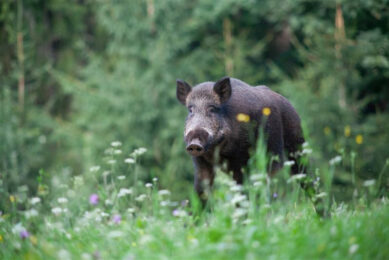PMWS and PCVAD – is it still there in Europe?
North America is breaking down with Post-weaning Multisystemic Wasting Syndrome (PMWS), or as they like to call it Porcine Circovirus Associated Disease (PCVAD), in its acute form. In Europe, we have mainly passed this high mortality phase in weaners and growers and have entered the chronic phase of lower mortality, but often in more valuable finishing animals. How badly are we affected here in Europe?
North America is breaking down with Post-weaning Multisystemic Wasting Syndrome (PMWS), or as they like to call it Porcine Circovirus Associated Disease (PCVAD), in its acute form. In Europe, we have mainly passed this high mortality phase in weaners and growers and have entered the chronic phase of lower mortality, but often in more valuable finishing animals.
How badly are we affected here in Europe?
In the UK, we still have farms that are regularly losing 9% of pigs in the finishing stage. In pre-PMWS times, mortality was usually 1.5-2.5% in finishers from a variety of causes, so these farms are experiencing an approximate 7% mortality due to PMWS, which is substantial (€5-6/pig produced) but when modelled to include poorer growth and FCE, increases the cost to €15-16/pig. One of the problems in the UK is the large numbers of pigs that are finished in straw-based systems. These promote our ‘welfare friendly’ image but are potentially increase the spread of the infectious agent (PCV-2) and the infectious challenge.
In some farrow-to-finish farms we encounter a non-antibiotic-responsive ‘viral’ diarrhoea in growing pigs (8-12 weeks of age), which we associate with an earlier PCV-2 infection but generally the mortality is low. In our three-site-production systems, we see it mainly in the finishing sheds at 11-16 weeks of age, soon after introduction, when maternally derived antibodies have presumably gone. Housing type and production system appears to have a significant impact.
Recent trial work in Germany has shown that the challenge from PCV-2 occurred even later, at 20 weeks of age, not far from slaughter selection age, presumably due to slatted flooring and delayed exposure and challenge. Mortality was 2-3% but the associated loss is considerable at this stage almost €85-90 each pig that died or €2 to €3/pig produced.
When costs associated with poorer growth and feed conversion efficiency are included the cost is doubled to €4 to €5.5/pig.
What are other bloggers seeing in their countries, is PMWS / PCVAD still a problem?











